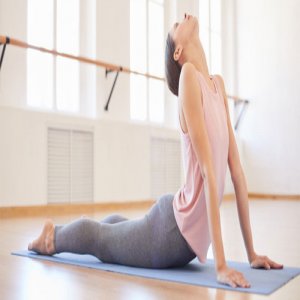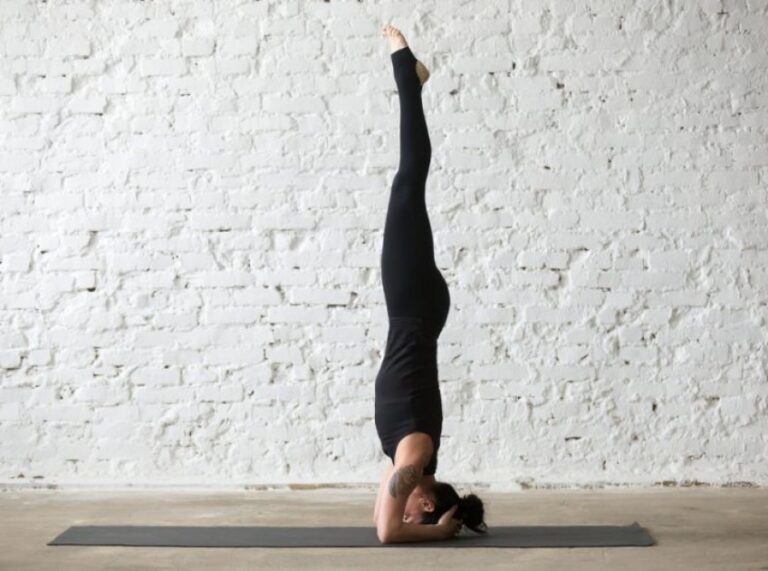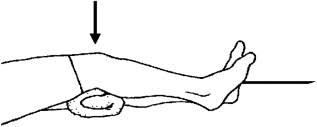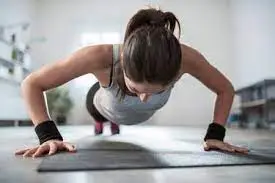Sartorius muscle strengthening exercise: Health benefits, Types, How to Do?
Sartorius muscle strengthening exercise is an important exercise to improve power of your legs, if you are perform this exercise regularly, there are many health benefits and also improve your performance in sports and other day to day activity and also improve your stamina and fitness level.
What is sartorius muscle strengthening exercise?
The sartorius muscle is not as well known as, the gluteus maximus, but this ribbon-like muscle gets a very much of use.This is the longest muscle of the body, wraps from the outside of the hip to the inner side of the knee, and is used every day from walking and jogging to lateral slides and lunges.
Almost every time you use your lower limb to ambulate, the sartorius is involved. A combination of these two actions allows you to sit in a cross-legged position—like an old-fashioned tailor that is why the sartorius is also sometimes called the “tailor’s muscle.”
Origin and Insertion
You have a sartorius muscle on both sides of your lower body, each originating on the anterior superior iliac spine of your pelvis. You can find these landmarks by feeling the bony protrusions on your hips at the anterior to your body. From its origin, the sartorius then crosses the anterior thigh, angling inward, ultimately inserting on the medial side of the tibia—the larger of the two bones in your lower leg.
These muscles crossed two joints hip and knee, so they act on both joints. hip flexion, hip abduction, hip external rotation, and knee flexion.
this muscle Action is
Cross-legged sitting, the butterfly stretch, and the fire log pose are other examples of exercises that require all of the sartorius muscle use.
Health benefits of sartorius strengthening exercise.
- Helps to improve hip and knee range of motion.
- Helps to improve the strength of overall lower limb muscles.
- These muscles are used when you walk, cross-leg sitting, and jogging.
- Reduce the risk of sartorius muscle pain, strain, and injury
There has different types of Strengthening Exercises of sartorius muscle.
Because the sartorius is involved in so many lower-limb actions, it is fairly easy to strengthen the muscle with a standard, well-rounded lower-limb routine. Every time you do a squat or lunge, and every time you go for a walk or jog, the sartorius is being put to action.
Lateral Step-Ups
How to do it?
- Lateral step-ups done on a bench or plyo box are an excellent compound exercise that targets all of the major muscle groups of the lower limb. You can perform these using nothing more than your body weight, or you can use resistance-training equipment like dumbbells or a loaded barbell to make the exercise more difficult.
- For this exercise, you have to stand to one side of a steady box or bench.
- Bend the hip and knee on the leg closest to the bench and abduct your hip to step up onto the box.
- Follow this exercise on your opposite leg to rise to stand on the bench. Reverse this movement and carefully step down from the box.
- Complete a set of 10 to 15 on a single side, then switch sides and lead the step up with your next leg.
Lateral Band Walks
How to do it?
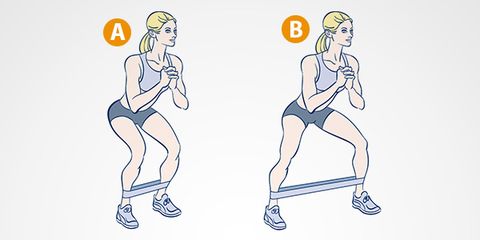
- Band walks are a great exercise to strengthen all of the abductors of your hips. Put a small, looped resistance band around your legs, just above your ankles. to do this exercise you have to Stand with your feet – hip-width apart so the band is taut, but not tight.
- Flexed your hips and knees slightly so you are in a “ready position,” then take a step laterally to the left, pulling against the resistance of the band.
- Step your right foot toward your left foot, but do not let the band go slack.
- Continue stepping to the left, taking 15 to 20 steps, then reverse the movement, this time taking 10 to 15 steps to the right.
- If the exercise feels too challenging, place the band above your knees, instead of above the ankles.
Plie Squats
How to do it?
- For the pile squat set up you first abduct your hips by creating a wide base of support, stepping your feet out laterally from your midline. Then rotate your hips externally, so your thighs, knees, and feet point toward the sides of the room.
- From here, you have to flex your knees and hips, lowering your glutes straight down while keeping your hips externally rotated so your knees remain aligned with your toes.
- Your knees form a 90-degree angle, press through your heels, and return to the initial position.
- Do 10 to 15 repetitions of 2 to 3 sets.
- You can perform this exercise by using body weight, or you can increase resistance with dumbbells or a barbell.
Clam Exercise
How to do it?
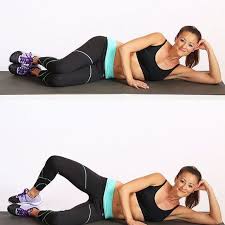
- The clamshell exercise looks simple, but when it is done correctly, it fires up the outer hips, putting your external rotators to work.
- Lie on your left side, your bottom arm extended upward to support your head and neck.
- Flex your hips and knees, so your thighs are positioned at a 90-degree angle to your trunk and your knees are also flexed at roughly 90-degrees. From here, make sure your shoulders and hips, and knees are stacked, your body perpendicular to the ground.
- Keep your big toes touching, engage your core, and externally rotate your top hip so your knees open, as though you were a clam opening up. Rotate as far as you comfortably can with proper form, then reverse the movement, internally rotating your hip back to its initial position.
- Do 10 to 20 repetitions of 2 to 3 sets before repeating on the next side.
- If having your hips flexed to 90 degrees does not feel good as you rotate, lower your hips to a 45-50 degree angle. To make the exercise more challenging, place a small looped resistance band around your legs, just above your knees. When you externally rotate your top hip, you will open your knees against the resistance of the band.
Cable Knee Raises
How to do it?
- The cable flexed-knee leg raise works the sartorius from a standing position and it involves hip and knee flexion. Hip flexion takes place when your thigh moves toward your tummy and knee flexion take place when your heel bends backward.
- After fastening an ankle cuff to your left ankle and a low setting on the machine, stand with your back to the weight stack.
- Steadily lift your foot off the ground and pull your leg forward.
- As you perform this, lift your knee until your thigh is parallel to the ground. Slowly lower your foot, repeat for a set of repetitions and switch sides.
- Do 2 to 3 sets of 10 to 17 repetitions
Squats
How to do it?
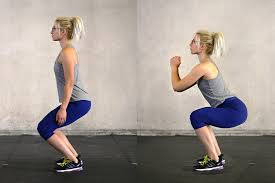
- Squatting involves knee and hip flexion, and it will utilize your glutes and hamstrings as well as the sartorius.
- For this exercise, you have to stand with your hips shoulder-width apart and lower yourself down by flexing your knees.
- Once your thigh is parallel to the ground, stand back up and repeat.
- Keep your core engaged and back straight throughout.
- To increase the difficulties, support a barbell across the top of your shoulders or hold dumbbells in your hands.
- Do 2 to 3 sets of 10 to 17 repetitions
Walking Lunges
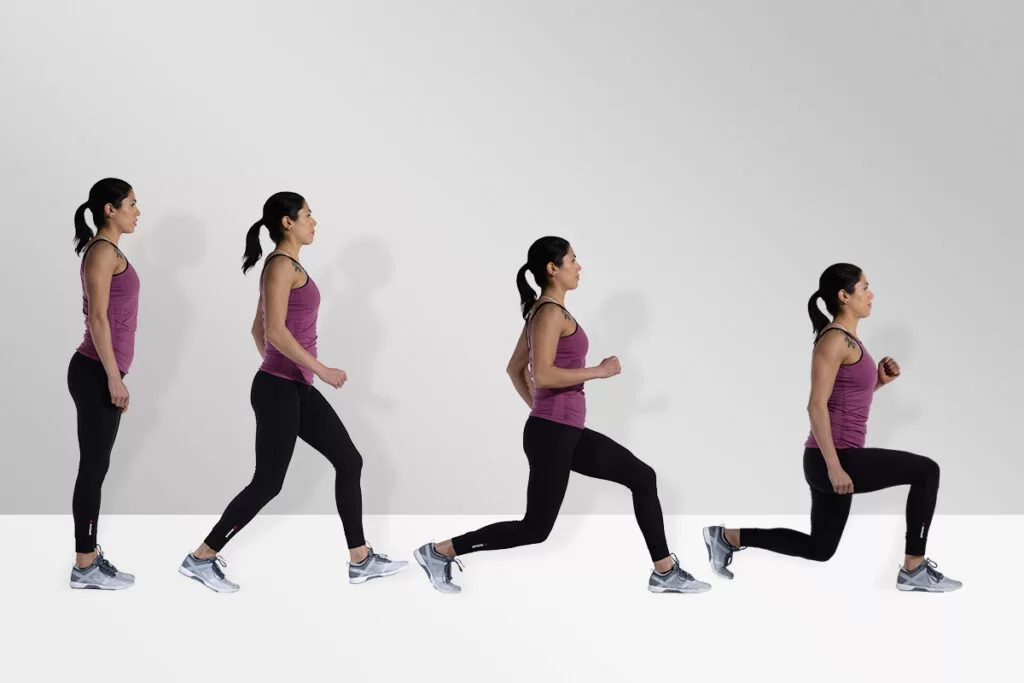
How to do it?
- This exercise work on the sartorius and lower limb muscles in a similar fashion to squatting, but with a different movement pattern.
- You have to stand with your feet together and hands on your hips, take a long step forward with your left foot and lower your body down by flexing your knees.
- Once your left thigh is parallel to the ground and your right knee is 1 to 2 inches above the floor, stand up and lunge forward with your left foot. Alternate each leg for a set of repetitions.
- To increase the resistance, hold dumbbells at your sides or a medicine ball to your chest.
- Do 2 to 3 sets of 10 to 17 repetitions
Standing Abduction
How to do it?
- This exercise targets the sartorius, gluteus medius, and gluteus minimus which are found in the buttocks.
- While standing on your right foot, extend your left leg slightly in front of your body, and then raise it laterally in the air to your left side.
- Slowly lower it back down, repeat for a 2 to 3 set of 10 to 20 repetitions, and switch sides.
- To increase the difficulties, wear ankle weights.
Roman Chair Sit-ups
How to do it?
- For this exercise you have to lie on your back on the machine and do sit-ups, you will utilize your sartorius muscles.
- Sit on the upper padded support and hook your feet under the lower padded support.
- Either cross your arms over your chest or place your hands on the sides of your head and bend backward until your trunk is parallel to the ground. Rise to a seated position and repeat.
- This exercise also utilizes the rectus abdominis and hip flexors.
- Do 2 to 3 sets of 10 to 20 repetitions
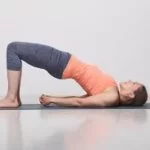
Glute Bridges
How to do it?
- You have to come in supine lying. flexed your knees and shift your heels close to your hips.
- Put your arms rest by your sides and keep your feet placed on the floor.
- Keeping your head, neck, and shoulders on the floor, lift your back and hips as high as possible.
- Your core should be tight and squeeze your glutes.
- Your shoulders, hips, and knees should be in a straight line.
- Do 2 to 3 sets of 10 to 15 repetitions
Single-Leg Squat
How to do it?
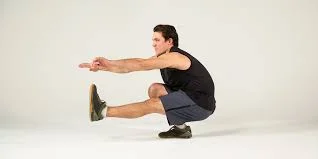
- Put your feet shoulder-width apart and extend your arms straight out in front of you for balance.
- Squat down as low as you can go, as though you’re sitting in an imaginary chair.
- Your knees should be directly above your ankles and your thighs should be parallel to the floor.
- While you are in the squat, pause at the bottom for a 2nd and raise one foot off the floor.
- Shift your elevated leg up and back as you rise to a standing position.
- Do 2 to 3 sets of 10 to 25 repetitions
Mountain Climbers
How to do it?
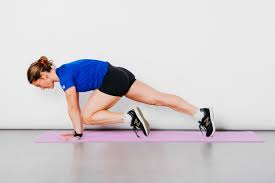
- Firstly you have to take the plank position on your hands.
- Your hands should be directly below your shoulders and your head, shoulders, hips, and heels should be in the same line, like an arrow.
- Alternate bringing both knees in toward your chest, either slowly or quickly.
- Do 2 to 3 sets of 10 to 15 repetitions
Low Lunge
How to do it?
- Take your left leg forward and go into a deep lunge. Place your right knee on the ground and your palms on either side of your left foot.
- Lift your right arm over your head and lean your body toward the left.
- Hold for two seconds. Repeat on the next side.
- Do 2 to 3 sets of 10 to 15 repetitions.
Step-ups
How to do it?
- This exercise targets almost the lower limb muscles, especially the sartorius.
- You can perform this exercise at a stair, box, or raised plank.
- All you need to do is stand with your feet slightly apart in front of a raised surface.
- Place your right feet on the box and climb up. Stand with both your feet on the box and step down using the left leg.
- Be careful while stepping down to avoid any kind of injuries.
- Repeat the same 15-22 times at least. You can also add weights or dumbbells to add more challenge to the workout.
When did you not do this exercise?
- If your health care provider advised you for taking a rest.
- If you feel any numbness or pain then stop immediately and consult your therapist.
- If your leg bone is recently fractured then avoid these exercises.
- If you have back issues then avoid weight lifting workouts.

